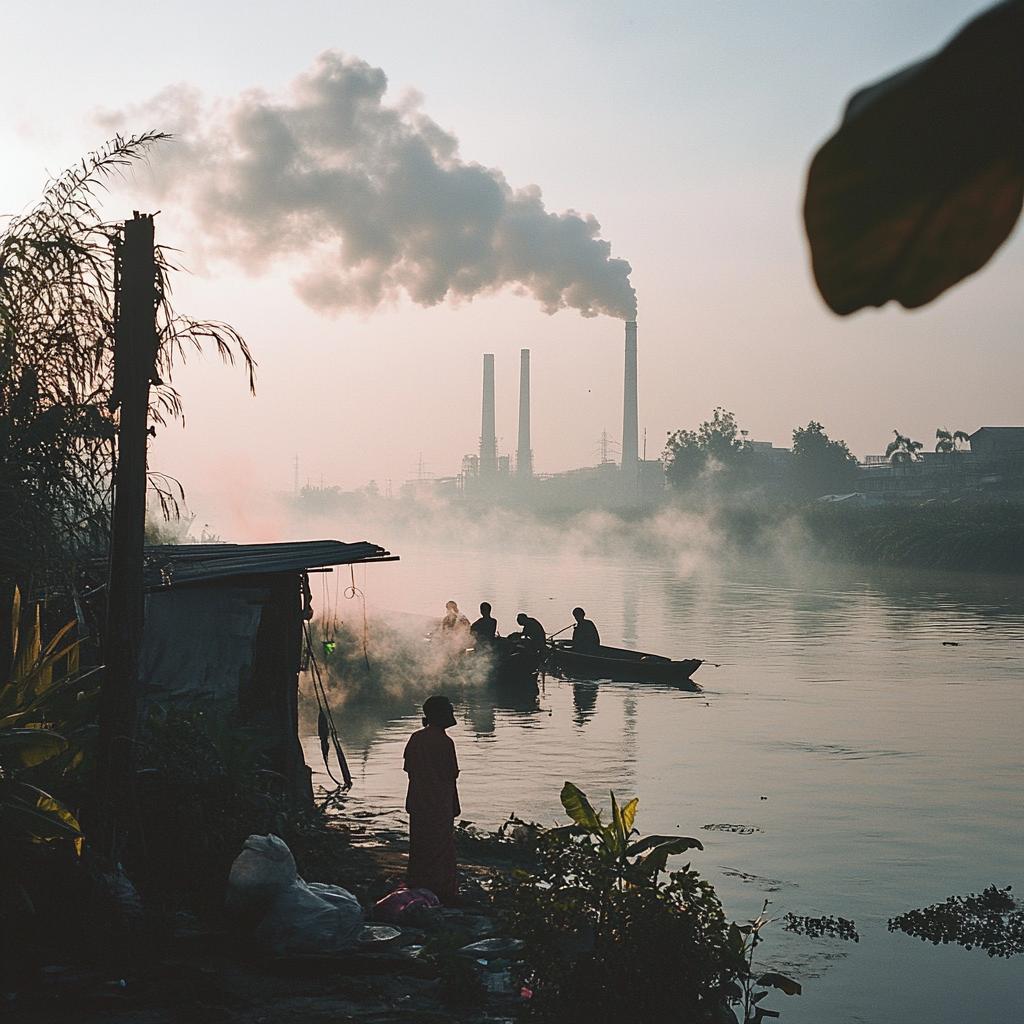On a typically serene morning along the banks of the Mekong River, one might expect to hear the gentle rustling of leaves and the soft calls of river birds. But on this particular Wednesday, the northeastern province of Nakhon Phanom was in a chokehold, cocooned in a blanket of thick smog that hugged the waterway like an unwelcome guest. The scene set the stage for a tale of Mother Nature appalled by humankind’s chronic missteps.
The culprit of this atmospheric oppression? None other than the infamous ultrafine particulate matter—PM2.5. With levels reaching hazardous heights, the Geo-Informatics and Space Technology Development Agency (Gistda) reported that the northern and northeastern reaches of Thailand, along with sections of the Central Plains and the East, had inhaled more dust than is healthy within 24 hours leading up to Thursday morning.
As clocks ticked to 8am Thursday, an alarming 19 provinces were marked with red, a hue that screamed “hazardous to health” for PM2.5. This rogue’s gallery included Mae Hong Son, proudly if not worryingly, sitting at the pinnacle with a dizzying 122.5 microgrammes per cubic metre of air. Not far behind in the leaderboard of doom were Phayao, Nan, and the serene province of Trat. Places like Lamphun and Phrae turned from postcard-perfect provinces to players in this smoggy soap opera, alongside others like Chiang Rai, Lampang, and Chiang Mai.
Within the smoggy tapestry, 36 more provinces were dipped in orange, whispering warnings of health impacts from PM2.5 ranging from 37.7 to 73.7µg/m³. This unsightly spectrum included cultural heartlands and burgeoning boom towns like Kanchanaburi and Nakhon Ratchasima.
Yet, amid the haze, there were pockets of reprieve. Bangkok and its cohort of sixteen provinces were branded with a moderate badge in the morning smog review, wearing PM2.5 levels between 25.3 and 37.5 µg/m³ like an almost commendable scar. Here, urbanites from Prachuap Khiri Khan to Phuket had just enough air quality to breathe a sigh of relief.
At the southern extremity, five provinces shone like beacons of breathable bliss, with Narathiwat and Yala flaunting air quality so sweet it felt downright tropical—PM2.5 levels lounged between 18.1 and 23.8µg/m³.
These revelations took to the desks of those in power like a storm brewing in a polished teacup. With a steely resolve, Thai authorities dialed in an environmental cavalry, heralding measures aplenty. The choreographed routine to tame the air would see water sprays dispensed like summer rain and cloud seeding conjured to coax precipitation.
Up high in the echelons of government, Prime Minister Paetongtarn Shinawatra stood as the beacon of hope, her voice a clarion call for collective action. “The government’s campaign against air pollution is a shared responsibility,” she insisted, noting the irony of pollutants drifting over borders like smoke from a wayward campfire. Discussions with Asean neighbors were heralded as a vital step on the road to rehabilitation.
In a dramatic aside, the Interior Ministry shared their tally—over 133 arrests made for pollution infractions in just three months. An impressive statistic as an ode to the fight against this invisible shroud.
While the smog saga might linger for those inhabiting these solemn skies, the resolve to clear the air is steadfast. Armed with plans and commitments, the heart of Thailand beats a little stronger with each determined breath.


















I’m not surprised by this PM2.5 crisis in Thailand. It’s shocking how ignored air quality is until a crisis hits. When are we going to learn?
Exactly! People underestimate the long-term health impacts of smog.
Plus, the economic consequences are huge. Imagine the healthcare costs rising because of respiratory diseases.
It’s easy to criticize, but what’s the alternative when industrialization drives our modern economies?
Honestly, I think the government is doing all it can. The cloud seeding and water sprays are proactive steps!
Not sure about that. These are band-aid solutions. What’s the plan to stop this from happening again next year?
Spot on, Sam. Consistent policy changes and stricter regulations are needed, not just temporary fixes.
Agreed, injecting water and manipulating clouds sounds cool, but what about sustainable energy policies?
It’s a pity when these beautiful places are marred by pollution. I was planning a trip to Chiang Mai!
You’ll love it once this haze clears. Maybe focus on the southern provinces for now?
Chiang Mai is breathtaking regardless. Hopefully, this will soon be under control!
It’s high time we recognize the cross-border nature of pollution. Smog doesn’t respect boundaries, does it?
That’s the tricky part. ASEAN regional cooperation is key, but shared responsibility often leads to finger-pointing.
Such talks should have been initiated long ago, but better now than never, right?
Anyone else concerned about the effects on children’s development in these regions? This isn’t a trivial matter.
Absolutely. Immediate action is essential to prevent cognitive developmental issues in kids exposed to such pollution.
Pollution control is everyone’s responsibility. Education must include the importance of environmental stewardship.
133 arrests sound like a lot, but is it enough? Or just a PR stunt by the authorities?
An arrest count is just numbers until we see a reduction in PM2.5 levels. It’s results that matter.
I remember breathing in the fresh Mekong air years ago. Sad to hear it’s now hazardous.
Air quality has diminished worldwide, unfortunately. It really is heartbreaking.
The southern provinces seem like sanctuaries right now with their clear air. Great job by them maintaining it!
It’s crucial to find long-term solutions for air pollution. Renewable energy is a must for a sustainable future.
Visibility must be terrible right now in those provinces. How’s aerial traffic coping?
While governments drag their feet, individuals bear the brunt of the impact. It’s frustrating but true.
It’s the planet crying for help; we must listen before it’s too late!
I hope the international community offers help too. No country should handle such crises alone.
Action at all levels of governance is crucial. Complaining changes nothing without follow-through.
The irony of the modern world—advancement at the cost of health. Time to rethink priorities.